The 2019 Cricket World Cup is less than a year away and it is time to think about the relative talent of the teams that are going to be contesting in the tournament. Usually it is very tough to predict such tournaments a year before as a lot can change within twelve months.
Moreover, the nature of tournament cricket is such that teams that peak at the right moment can make unlikely runs. On the other hand, some teams that are excellent ‘on paper’ can collapse at the wrong moment and be eliminated before the knockouts.
However it is still pertinent to look at the ranking of the ten teams that will compose the 2019 World Cup. The tournament in England portends to be unique, considering that it will only feature ten teams.
While that is rather unfortunate for some of the supposed “minnows” that colored previous tournaments, it also means that the tournament will probably feature closer matches (at least the ICC hopes so). Thus, ranking all of these ten teams a year before the World Cup is a rather difficult task- but it doesn’t hurt to try.
10. Afghanistan
Afghanistan’s run to the World Cup is one of the most amazing stories in recent cricket World Cup history. While Afghanistan qualified for the previous World Cup and have amazing potential, they had been basically eliminated from the 2018 World Cup qualifier after a heartbreaking loss to Hong Kong.
At that point, Afghanistan had lost their first three games (to Scotland, Zimbabwe and Hong Kong). It seemed impossible for them to qualify for the tournament. Yet from that point onwards, everything went right for the team: Zimbabwe beat Hong Kong and Afghanistan easily dispatched Nepal.
This enabled them to qualify for the Super Sixes where they shocked West Indies before dispatching Ireland in a thriller decided in the final over. It was the type of story that will never be forgotten in Afghan cricket history.
However at the actual tournament, Afghanistan are likely to struggle. Their two best players are their spin duo: Rashid Khan and Mujeeb Ur Rehman- players whose skillsets will probably not translate to English conditions. Considering the relative weakness of their pace attack, it is easy to imagine daunting totals being made on flat pitches by teams against Afghanistan.
Moreover, the team’s batting lineup is ageing. Ashgar Stanikzai, Mohammed Shahzad, Samiullah Shenwari, Mohammed Nabi are all over 30 years old. Yet none of them have ever played an international ODI in England, thus the conditions may come as a rude shock. Afghanistan have done well to get here but making an impact in the tournament may be a step too far.
9. West Indies
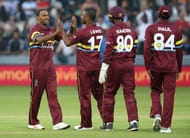
The West Indies have enjoyed a small rejuvenation in test cricket over the past two years as they have won test matches (while still losing the overall series) against Pakistan (home and away), England before defeating Bangladesh earlier this month.
However, their ODI team has struggled tremendously over the past few years and this does not bode well for the World Cup. In fact, West Indies have not won a single ODI series since the 2015 World Cup (this could change Saturday evening as they go into a series decider against Bangladesh).
Even more worryingly, many of these series (including the ongoing Bangladesh one) have been at home in conditions when they should have been comfortable. Their batting lineup continues to be mediocre as they have a mix of ageing veterans and untested youngsters.
Chris Gayle may be a legend, but his only century since the 2015 World Cup was against the UAE. Both Evin Lewis, Shimron Hetmeyer and Shai Hope have great potential, but it remains to be seen if they can perform at their first World Cup. The lower middle order is particularly weak, as they rely on mediocre batsmen Jason Mohammed and Rovman Powell.
Jason Holder may be the great ‘hope’ of this side, having evolved into an excellent all-rounder. However, his bowling is the type that often gets demolished in England (pace and bounce but no ability to swing the ball). Similarly, they do not have a single bowler that can take wickets at regular intervals.
Truth be told, West Indies were very close to being the 8th or even the 7th team in these rankings due to the sheer potential of Lewis, Hope and Hetmeyer. However, more balanced teams like Bangladesh and Sri Lanka just edge them.
8. Sri Lanka
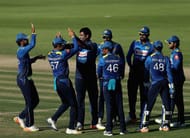
Since the retirements of Mahela Jayawerdene and Kumar Sangakkara after the 2015 World Cup, Sri Lanka’s ODI team has really fallen off the cliff. In fact since that tournament, Sri Lanka have won only two bilateral ODI series (while losing seven), one of which was against Ireland (along with two tri-series). Their only real impressive victory was a tri-series against Zimbabwe and Bangladesh, where a Shakib Al Hasan injury in the final gave them a surprising win.
Moreover, their team has been in constant flux and it is clear that the team management does not know what their best XI is. In fact they have used 49 players since the 2015 tournament in ODIs. For comparison, England and Bangladesh have only used 29 since that tournament. There are only six or seven players who are guaranteed to be in the final squad for 2018.
Their batting lineup is rather reliant on three players: Angelo Mathews, Dinesh Chanidmal and Upul Tharanga. Mathews is a brilliant batsman but very injury-prone, having suffered a variety of ailments over the past two years. Meanwhile, Chandimal has been mired in a ball-tampering scandal thus robbing him of valuable match experience before the tournament. Finally, Tharanga’s technique is not ideal for English conditions considering his tendency to poke outside the off-stump.
Meanwhile Sri Lanka’s bowling attack has been fodder for opposing batsmen, especially a certain Indian opener who has scored two double-centuries against the team (no prizes for guessing). Nonetheless, Sri Lanka are propelled above West Indies because of their batting talent and the fact that they beat the Windies in a 2017 tri-series.
7. Bangladesh
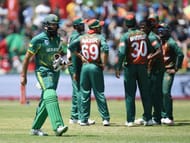
There is perhaps no team ranked below 7th with as much pressure on them as Bangladesh. The Tigers finally managed to qualify for the knockout stages in a World Cup in 2015 as Rubel Hossein’s famous spell carried them past England. However now the likes of Shakib Al Hasan, Mushfiqur Rahim, Mashrafe Mortaza and Tamim Iqbal are all going to be over 30 years old by the time June 2019 rolls around.
Thus, there will be tremendous pressure on all these players to perform in probably their last World Cup. While the Tigers had a great spell after the 2015 World Cup as they defeated Pakistan, India, South Africa, Zimbabwe and Afghanistan in consecutive tournaments. However, since then the team has struggled: losing bilateral series to England, New Zealand and South Africa while finishing second in tri-series to New Zealand and Sri Lanka.
A lot of this has to do with conditions: Bangladesh are a juggernaut at home and if this tournament was in the sub-continent, they would perhaps be ranked two or three spots higher. After all, they have a brilliant opener in Iqbal, two great middle-order batsmen in Mushfiqur Rahim and Mahmudallah, the world’s best all-rounder in Al Hasan along with two exciting bowlers in Mustafizur Rehman and Mehedi Hasan.
Yet, none of those players may be ideal in English conditions. Since 2015, England has been a haven for 350+ totals. If Bangladesh are to have a chance, they need to be able to reach that total. That seems unlikely considering that the country’s highest ODI total is 329 and have only exceeded 300 on four occasions since the 2015 World Cup.
Moreover, the bowling attack has also struggled against truly great batting attacks. For example in their recent series in South Africa (with similar conditions to England), the hosts made two 350+ totals and chased 282 with no loss in the three ODIs. This does not bode well for the Tigers.
6. Pakistan
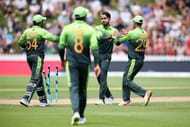
To be perfectly honest, the spots from 3 to 6 were changed at least ten times while creating these rankings. Australia, South Africa, New Zealand and Pakistan are so close to each other, that it felt almost impossible to rank them in any order. Yet despite some recent success in bilateral ODI series and their famous Champions Trophy victory, Pakistan are just marginally weaker than all three teams listed above.
It should be noted that Pakistan have one of the best bowling attacks in the tournament especially in English conditions. In Mohammed Amir, Rumman Raees and Hasan Ali, the Men in Green have a fearsome pace attack. This is complemented by the spin wizardry of Shadab Khan who could match the recent success of wrist-spinners on English soil.
Similarly, their batting lineup is much improved. Fakhar Zaman is the ideal modern ODI opener as he proved in the Champions Trophy final and his recent double-century against Zimbabwe. Babar Azam has also evolved into a talented middle-order batsman while Sarfaraz Ahmed and Shoaib Malik complement each other in the lower middle order.
Yet, Pakistan are not higher in these rankings because of a multitude of reasons. Their batting lineup does not seem capable of making the types of scores that are vital in modern ODI cricket. They have not reached 350 against a non-Zimbabwe team since 2014. Moreover, their losses in New Zealand (where they got swept 5-0), Australia (lost 4-1) and England (lost 4-1) over the past two years are discouraging.
5. Australia
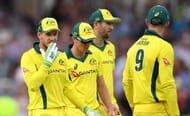
It seems strange to rank the defending champions and five time champions 5th in a ten team tournament. However, this spot is correct considering all the on-field and off-field issues faced by Australia in the past twelve months.
Firstly, the suspensions of Steve Smith and David Warner have completely changed the dynamics of this team. The duo will return around March 2019, only two months before the World Cup. Until then, their only match practice will come from T20 leagues. Thus, it remains to be seen if they will be able to reach their usual form in England.
Yet, the Smith-Warner suspension is not the only issue in the Australian team. Neither can become captain after the suspension, thus making it likely that Australia will be led by Tim Paine- a player whose place in the side itself is questionable. Meanwhile, Australia have lost their last four bilateral ODI series, only one of which came without Smith or Warner.
The main issue in their team seems to be their middle order as the batting attack is extremely weak after No.3. Travis Head is inconsistent while Marcus Stonis and Mitchell Marsh cannot be trusted above No.6. The situation got so poor that Australia had to recall the 34 year old Cameron White.
Even their bowling attack is fragile considering the injury-prone nature of Mitchell Starc and Pat Cummins. Moreover, they are one of the few teams in the tournament that do not have a consistent spinner- a necessity in modern ODI cricket.
These issues along with their recent past performance mean that Australia cannot rise above No.5 in these rankings. Nonetheless, Smith and Warner's batting along with Starc and Josh Hazlewood as pacers ensures that they do not rank below this spot either.
4. South Africa
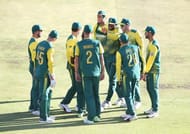
Almost always going into a World Cup, South Africa are regarded as one of the favorites in the tournament. That has certainly been the case since 1999 when South Africa went out in THAT semi-final against Australia.
However, this may not be the case twenty years later in England as South Africa are a team in turmoil especially after the abrupt international retirement of their best ODI batsman (and one of the greatest ever) AB De Villers.
This has left South Africa with a rather fragile lower middle order as they have to depend on the unreliable David Miller, the inconsistent JP Duminy and a multitude of inconsistent allrounders from No.5 to No.7. This leaves South Africa vulnerable to collapses when their top order fails as was evident in their 5-1 ODI loss to India earlier this season.
Yet what gets forgotten is the fact that the Proteas still have a great ODI team. Quinton De Kock, Hashim Amla, Aiden Markaram and Faf Du Plessis form a top order only matched by Australia, England and India in the tournament. Their pace attack with Dale Steyn and Kagiso Rabada is fearsome especially since it is complemented by the wrist-spin duo of Tabriz Shamsi and Imran Tahir.
Nonetheless, South Africa’s struggles in that home series against India combined with their weak lower middle order and their tendency to struggle in major tournaments prevents them from ranking higher.
3. New Zealand
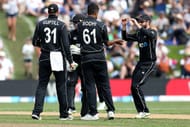
As usual, New Zealand continue to be underestimated by most of the cricketing world. Most of the discussion around the World Cup has surrounded the chances of India, England, Pakistan, South Africa and Australia.
Yet what has gone unnoticed is the fact that New Zealand have had an excellent run of results as they have thrashed Pakistan 5-0, beaten Bangladesh and West Indies while also beating Australia twice in the past three years. Moreover, New Zealand have also given a tough time to the two best ODI sides: India and England.
This run of results is also complemented by their team on paper which is quietly impressive. Their opening partnership is ideal for the modern game with a dasher like Martin Guptill being ably supported by an accumulator like Tom Latham. They are followed by two of the best batsmen in the world with the outstanding Kane Williamson and the mercurial Ross Taylor.
Meanwhile, their lower middle order is one of the few in the tournament with the outstanding attacking play of Colin Munro, Jimmy Neesham and Colin De Grandhomme. This has allowed New Zealand to accumulate several 350+ scores in recent times.
Finally, the Black Caps have one of the best bowling attacks in the tournament with a pace attack composing Tim Southee, Trent Boult and Matt Henry- all with the ability to swing the ball in England. They are also complemented by economical spinners like Mitchell Santner and Ish Sodhi.
In 2015, New Zealand’s run to the final was seen by many as a result of home conditions rather than an all around excellent team. Now they travel to England with a similarly impressive team- ready to shock the World once again.
2. India
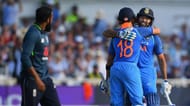
Perhaps if India would have prevailed in the third deciding ODI against England, then they would be ranked top in these rankings. Yet that series managed to expose some of the main flaws in the team which prevent it from being the favorites for the 2019 World Cup.
Firstly, the tendency of Rohit Sharma and Shikhar Dhawan to play needless shots early in their innings may be problematic in knockout cricket. Moreover, the series showed that India’s fast bowling reserves behind Bhuvneshwar Kumar and Jasprit Bumrah continue to be weak as the likes of Siddarth Kaul were thrashed by the English batsmen.
Yet, the biggest problem is one that plagues many of the teams in this tournament: the batting order after No.3. As was painfully evident in the England series, MS Dhoni is no longer a finisher in the modern ODI game (though he may still be useful as an accumulator). Meanwhile, the likes of Suresh Raina and Dinesh Karthik failed to take advantages of the chances given to them.
However, it is also pertinent to recognize what makes this team so outstanding and why they have managed to beat the likes of South Africa, New Zealand and Australia over the past two years. Sharma, Dhawan and Virat Kohli form an incredible top order which can dominate any bowling attack. The potential in players like KL Rahul and Shreyas Iyer also bodes well for their middle order.
For once, India also have a bowling attack that matches their batting prowess. Kumar and Bumrah are two players that can bowl well both with the new ball and at death. Moreover, the spin guile of Kuldeep Yadav and Yuzvendhra Chahal is dangerous in any conditions. Thus while India have major weaknesses, they are still strong enough to be considered one of the favorites.
1. England
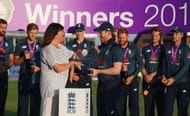
In 2011, it was India and Sri Lanka. In 2015, it was Australia and New Zealand. Over the past two World Cups, the hosts have dominated as they have managed to reach the World Cup final. Considering that England are hosting the World Cup alone, they might be seen as favorites for the tournament.
That is certainly true, but it is not because of home advantage or their familiarity with the conditions. After all, there is a reason why England are top in the ICC ODI rankings. Their strengths are numerous but they mainly pertain to the batting lineup which is probably the best in the world.
At the top of the order, they have Jason Roy, Jonny Bairstow and Joe Root- one of which almost always plays a big innings at an incredible strike-rate. Root may have problems with conversion in test cricket, but in ODIs he has established himself as an absolute beast. The fact that the likes of Alex Hales and James Vince may find themselves outside of the playing XI is testament to how deep England’s batting reserves are.
However, what makes England so special is their lower middle order, an area which is a trouble for most teams in the tournament. Eoin Morgan is the perfect No.4 and a decent captain who has instilled fearlessness in his side. Meanwhile Ben Stokes, Moeen Ali and Jos Buttler are all players with the temperament to play test cricket regularly while also possessing the explosiveness needed to play T20s- what more can you ask from ODI batsmen?
Furthermore, England’s bowling attack is also one of the most balanced in the tournament. Adil Rashid and Moeen Ali provide a spinning alternative that English teams have historically lacked in ODI cricket. Meanwhile any combination of David Willey, Mark Wood, Chris Woakes and Liam Plunkett have the potency to be effective.
England can outgun any team in a 350+ chase on a flat track. They can succeed with Ali and Rashid on a dry track (as shown in the second ODI against India). And of course, they can succeed with their pacers on a traditionally English grassy track. This combination along with their home advantage makes them favorites for the World Cup, no matter what their historical record.
Brand-new app in a brand-new avatar! Download CricRocket for fast cricket scores, rocket flicks, super notifications and much more! 🚀☄️
